What lessons did the Bradford White team learn in 2020? In a year dominated by COVID, COVID, COVID, we learned the value of flexibility and communication above all else. Early in the pandemic we were able to successfully assert that we—as a company, in our factories, our distributors and our contractors—are essential to the health Read more
Featured Articles
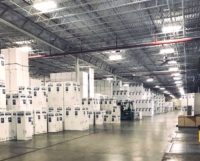
What lessons did the Bradford White team learn in 2020? In a year dominated by COVID, COVID, COVID, we learned the value of flexibility and communication above all else.
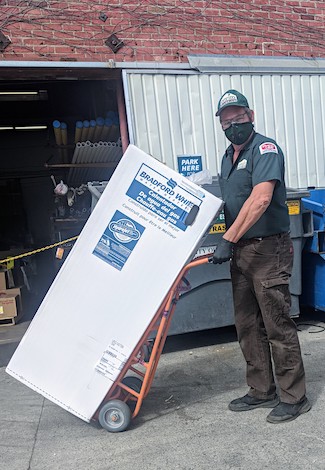 Early in the pandemic we were able to successfully assert that we—as a company, in our factories, our distributors and our contractors—are essential to the health of the country. We can’t do without hot water for sanitation, cooking, cleaning, and bathing in hospitals, nursing homes, military installations, food processing plants and in America’s homes. Our contractor customers are vital and essential providers of heat and hot water. There was much that we didn’t know back then, and supply chains began to shut down. Adding to the confusion, the U.S.-based supply chain was operating under different COVID rules and restrictions than what we saw with non-U.S. suppliers. We worked through the initial uncertainty about how we could best protect our employees and stabilized our factories in Middleville and Niles, Michigan, and Rochester, N.H.
Early in the pandemic we were able to successfully assert that we—as a company, in our factories, our distributors and our contractors—are essential to the health of the country. We can’t do without hot water for sanitation, cooking, cleaning, and bathing in hospitals, nursing homes, military installations, food processing plants and in America’s homes. Our contractor customers are vital and essential providers of heat and hot water. There was much that we didn’t know back then, and supply chains began to shut down. Adding to the confusion, the U.S.-based supply chain was operating under different COVID rules and restrictions than what we saw with non-U.S. suppliers. We worked through the initial uncertainty about how we could best protect our employees and stabilized our factories in Middleville and Niles, Michigan, and Rochester, N.H.
We’re entering a new phase of COVID-19 these days, with an evolving sense of normalization. We’re still currently running our plants to maximize employee safety, and we’re doing so in a market where there is high demand for our products.
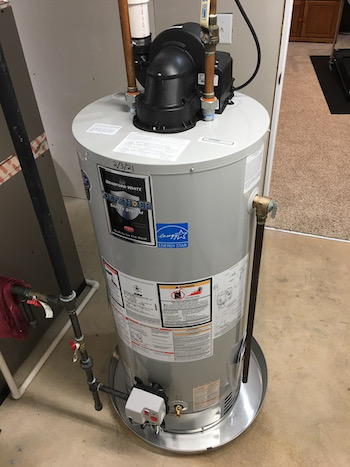
Photo Credit: Alan Carlson, Armbrust Plumbing & Heating
We follow state and national requirements for PPE. We run through health protocols daily with a questionnaire and a temperature check for all employees, and we’ve adjusted our scheduling to handle that. We exercise social distancing where possible and employ contact tracing measures when necessary. We clean and sanitize our factories frequently. It’s been gratifying to hear feedback from those business partners who are authorized to come into the factory that we are going above and beyond to keep employees safe compared to what they’ve seen elsewhere. I feel very good about what we’re doing to look out for the health of our employees while striving to meet our customer commitments.
You can’t communicate enough. Constant communication with our customers is crucial. We understand our distributors’ day-to-day demands and frequently communicate with them through our sales team and rep network. All their manufacturers have been affected and in different ways, so distributors have a lot of questions. We share information with contractors through our For the Pro® site, and the contractors we talk with have all been busy.
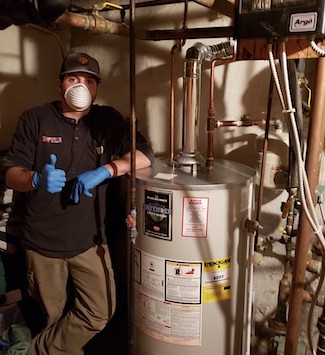 The same goes for our employees. Communicate and then communicate some more. It’s imperative to share reliable (and factual) information with our employees to avoid confusion. If people can’t get reliable information, they may fill in the blanks and fuel an already overflowing COVID rumor mill. We had about 150 employee communications last year and 80% of them were associated with the pandemic. You have to make sure your employees understand what it takes to be safe both in and out of the workplace. The coronavirus has been particularly difficult because information on the disease and availability of vaccines varies from state to state and even county to county.
The same goes for our employees. Communicate and then communicate some more. It’s imperative to share reliable (and factual) information with our employees to avoid confusion. If people can’t get reliable information, they may fill in the blanks and fuel an already overflowing COVID rumor mill. We had about 150 employee communications last year and 80% of them were associated with the pandemic. You have to make sure your employees understand what it takes to be safe both in and out of the workplace. The coronavirus has been particularly difficult because information on the disease and availability of vaccines varies from state to state and even county to county.
Where’s the best guidance coming from? It’s difficult to say what’s the best source, but the CDC appears to have been the most consistent central source for national guidance on what to do for health and safety during the pandemic. Local information can vary by county or parish or municipality. In southwestern Michigan and southeastern Pennsylvania for example, where two of our facilities are located, the guidance varies from county to county, so one county may be on the second phase of shots while another county is barely in phase one. Our Canadian-based team must look to the Canadian government for guidance nationally and then understand what each of the provinces are saying.
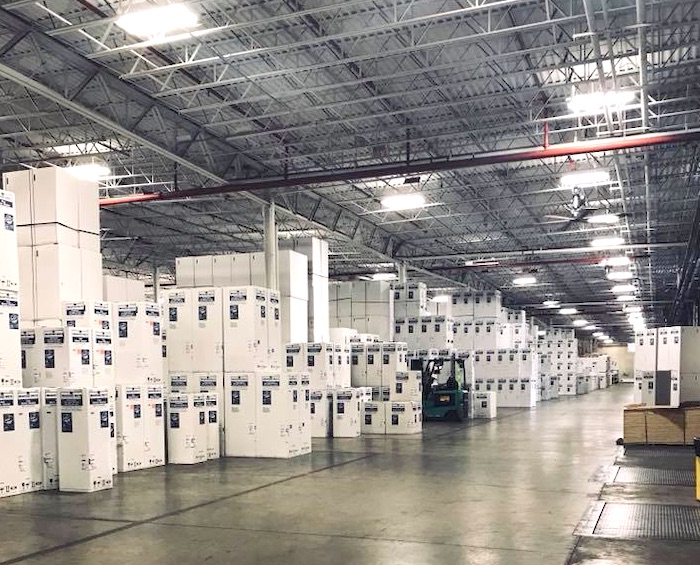
How many of these practices will live on beyond the COVID-19 era? As far as products, we’ll continue to see increasing levels of connectivity and remote diagnostics, particularly on the commercial side of things where building management systems are commonplace for monitoring performance. This is not new, but the constraints of COVID have caused an acceleration in the development of more remote capabilities. Virtual learning will continue, but we believe that “hands-on” training experiences will continue to be preferred. In terms of our general industry dynamics, a lot of us are anxious to reduce our time in the virtual/remote world. For us, this is a relationship industry and we like to see our customers and suppliers face to face. We’re most effective when we can be with a contractor in their own space to understand their challenges. You need to ride shotgun in the truck so you can see what they see and hear what they see and hear. And a virtual trade show is not a substitute for the discoveries you can make seeing and touching new products. For a company like Bradford White that prides itself on its face-to-face customer relationships, this has been painful.
This pandemic has altered almost everything in our lives, including food, water, healthcare supply, healthcare delivery, supply chains, insurance plans and contracts. As we prepare for the next pandemic, the planning must include economic recovery along with the health aspect. We were looking at the bullseye, but we missed many of the rings around it. Now we can see how big of an impact COVID-19 has on all facets of our lives.
When it comes to doing business during a pandemic, you can’t deny the human element. When you talk about somebody’s health and well-being, including any challenges they’re experiencing regarding their financial health and well-being, it becomes emotional. As much as you might want to employ common sense and logic when it comes to work, people have lost loved ones and lost jobs. Plus, the coronavirus has become part of the partisan political landscape when we need to be bipartisan when it comes to taking care of the health of the country.
 Carl Pinto, Jr. is senior director of marketing communications for Bradford White.
Carl Pinto, Jr. is senior director of marketing communications for Bradford White.

When I asked Conrado Ensenat Jr.—aka @conradtheplumber—if he ever considered himself a role model to young people thinking of entering the trades, he unequivocally answered, “No, absolutely not.” Yet his answer wasn’t completely without, perhaps, an internal epiphany. You see, according to Conrad, the way he does things may not be the way others do Read more
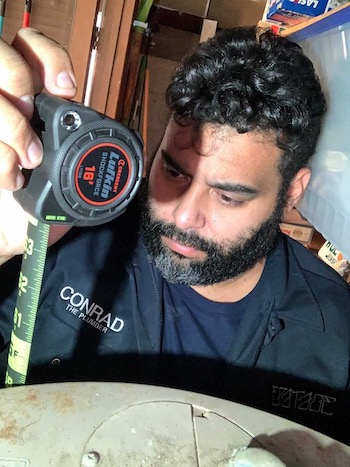 When I asked Conrado Ensenat Jr.—aka @conradtheplumber—if he ever considered himself a role model to young people thinking of entering the trades, he unequivocally answered, “No, absolutely not.” Yet his answer wasn’t completely without, perhaps, an internal epiphany. You see, according to Conrad, the way he does things may not be the way others do things. And that’s okay. But in reality, unbeknownst to Conrad, he may just be moving into that role model role as we speak. “What I am is a plumber that has no problem taking the time to answer any kind of question an apprentice or a student in school may have about our trade,” says Ensenat. “I believe we are more approachable today more than ever; communication is so much easier with social media. So, for me, a role model I am not. But a plumber with the love for the trade and wanting to see young people succeed if they want to pursue a career, then I most certainly am.”
When I asked Conrado Ensenat Jr.—aka @conradtheplumber—if he ever considered himself a role model to young people thinking of entering the trades, he unequivocally answered, “No, absolutely not.” Yet his answer wasn’t completely without, perhaps, an internal epiphany. You see, according to Conrad, the way he does things may not be the way others do things. And that’s okay. But in reality, unbeknownst to Conrad, he may just be moving into that role model role as we speak. “What I am is a plumber that has no problem taking the time to answer any kind of question an apprentice or a student in school may have about our trade,” says Ensenat. “I believe we are more approachable today more than ever; communication is so much easier with social media. So, for me, a role model I am not. But a plumber with the love for the trade and wanting to see young people succeed if they want to pursue a career, then I most certainly am.”
His Calling
Early on, Conrad was working for a restaurant and just starting at a local community college, yet he wanted something more. Working with his hands always appealed to Conrad so he quit the restaurant and started working as a carpenter’s helper. “It was okay, but saw what the plumbers were doing with the soldering and PVC, and I was intrigued,” Conrad says.
Conrad was hired as a helper cutting and removing cast iron pipe in a building in downtown Miami and loved it right away. “Sure, I was dirty and smelled bad but learning about the pipe and how it works was just really cool. Seventeen years later and I’ve never looked back; plumbing was my calling.”
Conrad’s journey into the plumbing trades technically began full time in 2002 where he started on “snake patrol,” as he was given a van full of all types of machines for drain cleaning—RIDGID, Electric Eel, General Pipe Cleaner, etc. “I learned quickly how to use these machines—I got slapped in the face by a cable, had my shoelaces ripped off after the cable got tangled on them and got splashed with sewer and grease—and all of this happened within my first two days.”

After one year, Conrad begged his boss for an upgrade and was moved over to camera inspections. Here, Conrad learned the insurance side of things for residential and commercial applications—how it all works and the importance of video and the location of problems. At this time, Conrad also was installing temporary sinks and water heaters, and doing leak detection as well. After about six months, Conrad went into new construction, completing multiple high-end buildings and renovations in multiple hotels. After about a year, Conrad took over as lead plumber on two high-end homes in Sunset Island and Hibiscus Island, Miami Beach. “One project took seven years to complete while the other took four, and that meant a lot of money and a lot of change orders,” says Ensenat.
At this time, Conrad bounced from lead plumber to supervisor—in charge of about 17 plumbers and 10 helpers—ordering material, pricing out jobs, and meeting with contractors and owners. “I didn’t carry a tool or do any labor for about four years; it was mostly delegating and office work. It was a bit boring at times and the days were long and sometimes stressful, but you go on,” says Ensenat.

Conrad with Omar Harris (left).
After the company closed its doors and went into new ownership, Conrad decided it was time to go on his own. He opened a company with a partner and ran it for four years.
“I tip my hat to all the business owners, but there’s another side to that coin. The long days and nights—being held accountable for what your plumbers and helpers do, calling contractors for payment, supply houses, bills, gas, insurance, marketing, etc. It was great for a while but I was working a lot, and when you’re on your own, you want every call and every job as the stress of business falls on you. You need to bring in the money for your plumbers and office staff. They depend on you.”
But in the end, family was most important to Conrad. There was a time Conrad was working 6-7 day a week, 15-20 hours per day. “So, I closed shop and went and worked for a commission company, which was not the best decision, but I did see another side of plumbing I hadn’t seen, which I am not too fond of. But I did meet my best friend Omar Harris there, and met some great plumbers like Hiram Martinez and Joey Neal. These are great guys with vast knowledge of the trade.”
After leaving that company, Conrad joined the Broward County Parks and Recreation Division, where he has been for the past three years. “I couldn’t have made a better choice for me and my family.”

Looking back to when he started, Conrad says he didn’t know what he was doing but always enjoyed learning. And, as he was putting systems together and turning on/off the water, gas, or testing a drainage system, there was a sense of accomplishment. “We all have that story where we figured out a leak when five other plumbing companies could not. Where we worked all night, were dead tired, and when they asked, you said ‘you had to be there.’ The journey is different but the end result is the same,” says Ensenat. “The customer is coming to you with a problem and needs you to solve it. Putting that trust in you is a great feeling and honor; they could’ve picked anyone but they picked you.”
Learning from the Past
Conrad owes a lot of what he knows in the trades to William Gonzalez. “That man taught me a lot and would become my future father-in-law. He was an old-school plumber since the ’70s and he did not take it easy on me—probably because I was dating his daughter, lol. But he showed the business side of plumbing. He pushed me in new directions and always challenged me, whether it was reading plans delegating or a simple stoppage. His passion became my passion and my drive to learn all new methods of plumbing. I will be forever grateful to him, leaving me with the knowledge to make it in this trade; he may be gone, but never forgotten.”
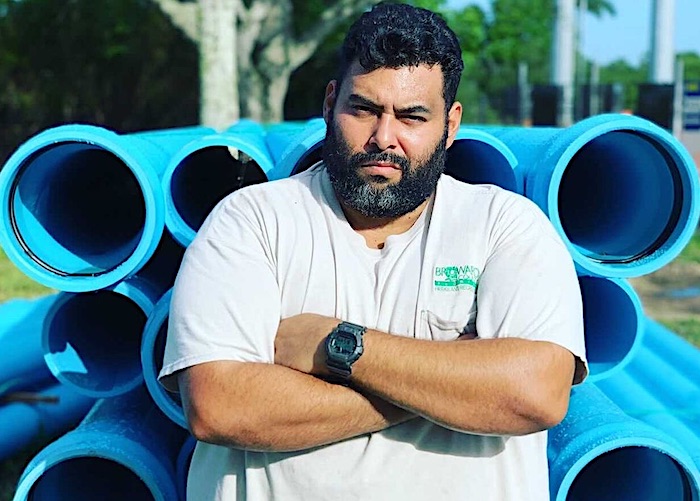
Conrad’s brother-in-law, Guillermo Gonzalez, also taught him a lot about gas, and working with tankless water heaters. “Like his dad, he is a great person, and I was very lucky to be welcomed into the family—not only have they shown me love but they showed me a trade and a skill that will never be taken away. I have taken what they taught me and I have taught others as well,” says Ensenat.
Social Media All-In
According to Conrad, social media has been a great tool from talking to people all over the world to seeing the different methods of plumbing that are used—from the equipment to the way others approach the work. “We are a community here to help each other answer questions: we are at a time with social media where you can ask a question to a professional and get a real answer from the people that do it and live the trade,” says Ensenat.
Speaking of helping others, Conrad and his best friend Omar Harris (@omartheplumber) are in the initial stages of their PipeTalk “Instacasts”on Instagram. “We want a show where we can talk about anything in the trade, not a show about showcasing tools or doing giveaways. Real talk about experiences in the trade. How we can truly help apprentices understand what they are getting into,” says Ensenat.
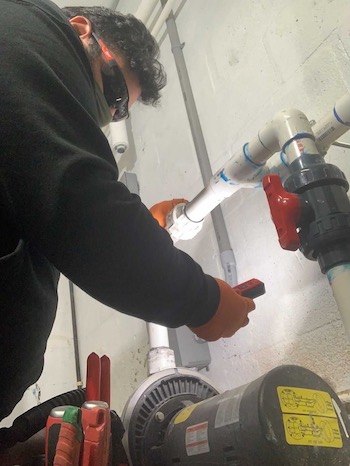 In the end, for Conrad, it’s important to show new apprentices that the plumbing trade is not just about labor-intensive work; there is a future beyond just being a plumber. For instance, you can become lead plumber or foreman, says Conrad, or you can get your license and become an inspector or a plans processor. “There are so many great paying jobs with opportunities revolving around plumbing than just installing pipe, tubs and toilets all day. And this goes for any man or woman and every color and race—you have the opportunity to go far as you want.”
In the end, for Conrad, it’s important to show new apprentices that the plumbing trade is not just about labor-intensive work; there is a future beyond just being a plumber. For instance, you can become lead plumber or foreman, says Conrad, or you can get your license and become an inspector or a plans processor. “There are so many great paying jobs with opportunities revolving around plumbing than just installing pipe, tubs and toilets all day. And this goes for any man or woman and every color and race—you have the opportunity to go far as you want.”
And with that hard work comes a little down time. Before the pandemic, Conrad would take multiple vacations a year to spend time with his family. “When I’m off work, I’m off. The two days a week I’m off, it’s all about either what I’m doing or spending time with the kids or the wife,” says Ensenat.
During football season, it’s all about the Miami Dolphins—Conrad would enjoy tailgating and going to games, including road games. Oh, and the last time Conrad said today is a great day? “I opened a cleanout at the front of a house holding water. Stuck the cable in 3 feet and it cleared without turning the machine on. Winner, winner, chicken dinner.”
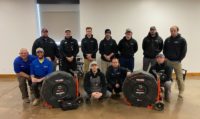
Hoffmann Brothers Heating, Air Conditioning, Plumbing, Electrical & Appliance Repair in St. Louis, MO, has added RIDGID® K9-306 FlexShaft™ Drain Cleaning Machines to every new plumbing service truck they outfit after experiencing the tool’s versatility and time saving benefit. “It’s definitely a time saver, simply just loading and unloading it, going from heavier machines to Read more
Hoffmann Brothers Heating, Air Conditioning, Plumbing, Electrical & Appliance Repair in St. Louis, MO, has added RIDGID® K9-306 FlexShaft™ Drain Cleaning Machines to every new plumbing service truck they outfit after experiencing the tool’s versatility and time saving benefit.
“It’s definitely a time saver, simply just loading and unloading it, going from heavier machines to lighter, more compact machines, saving time right there, then add speed and cleanliness on to that,” said Christian Telford, Master Plumber/Drainlayer and Field Operation Manager at Hoffmann Brothers.
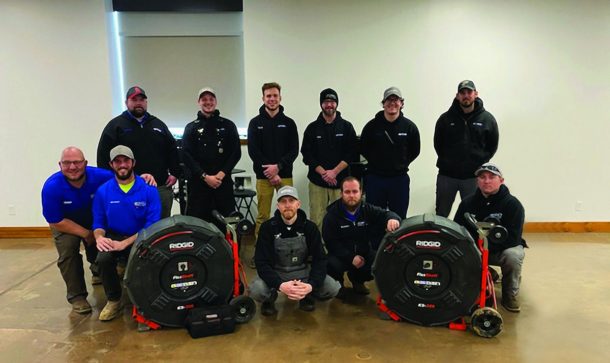
“You also just can’t get the thorough cleaning with standard equipment like you can with FlexShaft,” he said. “The ability of the expanding chains to maximize the pipe size allows for a full pipe cleaning, coupled with how clean the machine itself stays, you just provide the client with an overall better experience.”
Christian notes that the FlexShaft is 10 to 25 percent faster at cleaning drains and for a flat-rate fee company that means saved labor costs and the opportunity to complete more jobs in a day.
In business for over 40 years, the team at Hoffmann Brothers prides themselves on the quality and integrity they bring to every job. That means not only providing the best customer service to clients, but also staying on top of the latest technology and equipment to be at the top of their industry.
A couple of years ago they purchased a heavier and more expensive high-speed descaling machine that’s used solely for drain lining work. The cost kept it from being added to other service trucks. After learning about the K9-306 at WWETT and its enclosed cable drum for enhanced cleanliness they started using it regularly and quickly found out what a versatile tool it is.
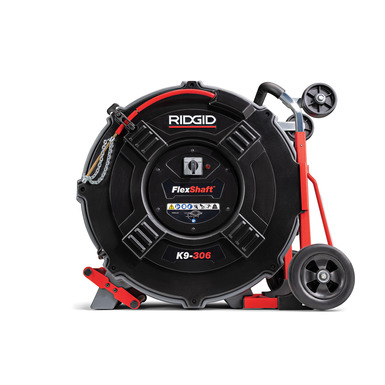
One of the impressive uses the Hoffmann Brothers team has found for FlexShaft is root clearing.
“We were very pleased at how well it actually did with roots without binding up too much,” Christian said. “We’ve had heavy balls of roots that our sectional and drum machines usually have to make several passes. With FlexShaft you may have to make one additional pass to make a final polishing while running water, which by this time you have again saved time and given the client a thorough cleaning which is a huge win for both parties.”
They are also using FlexShaft on descaling job sites.
“Lining has become a very valuable part of our business, however one key part of this is being able to get the original host pipe as clean as possible. This means sometimes taking a 100-plus year cast iron pipe and descaling it, a very delicate and painstaking task,” Christian said.
Hoffmann Brothers decided to run the K9-306 through the course to see if it could meet up to their lining work quality standards and allow them to utilize it for their pre-qualification process.
“Not only did it meet our expectations, but we decided to also take it a step further and try to use it with reinstatements which puts some heavy pressure on the equipment, and it also met the challenge,” he said.
Christian said this was a great testament to the K9-306 as this was not why they originally purchased the FlexShaft. However, it opened the door for their specialized technicians who do the lining process to be able to not only perform their daily jobs with clients, but also perform pre-qualifications on perhaps the same visits. A great gain for the company and the client.
Hoffmann Brothers is now utilizing the FlexShaft for residential, light commercial, descaling, milling and reinstatement jobs.
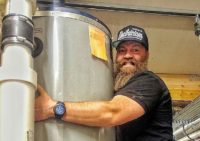
If you’ve ever seen Bob Baker’s Instagram page (@bakerplumbing), you’ll notice a few posts sprinkled in that show the beauty in this world, the good in people and an optimistic underlying tone. “It’s really become a focus for me as it seems that much of what is ugly and unkind dominates the news and many Read more
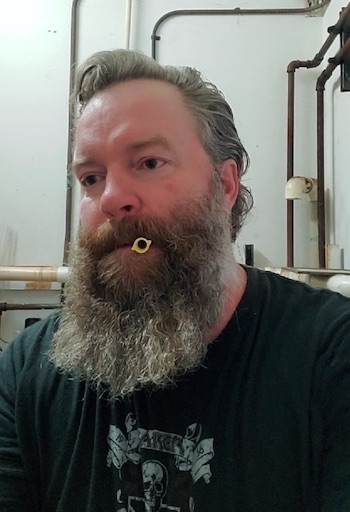 If you’ve ever seen Bob Baker’s Instagram page (@bakerplumbing), you’ll notice a few posts sprinkled in that show the beauty in this world, the good in people and an optimistic underlying tone. “It’s really become a focus for me as it seems that much of what is ugly and unkind dominates the news and many feeds I see. Honestly, it is therapeutic for me to focus on the wonderful things that this life, the world and the trade has to offer,” says Baker.
If you’ve ever seen Bob Baker’s Instagram page (@bakerplumbing), you’ll notice a few posts sprinkled in that show the beauty in this world, the good in people and an optimistic underlying tone. “It’s really become a focus for me as it seems that much of what is ugly and unkind dominates the news and many feeds I see. Honestly, it is therapeutic for me to focus on the wonderful things that this life, the world and the trade has to offer,” says Baker.
While it’s hard to escape all of the negativity, Baker sees the more positive approach as more of a mental exercise more than anything, to keep him focused on the good, simple, beautiful things that surround him if only he took time to notice. “I try not to let that negative stuff affect my mood and relationships so positive posts are really reminders to say the world, my life and this trade are wonderful, and have blessed my life and the life of my family more than I realize.”
Baker Plumbing
Baker Plumbing started in 1956, as Bob’s grandfather was an aircraft mechanic during WWII, and after the war he moved from Ontario to Alberta to start a family and started rehab training—provided by the military—to become a plumber. He got his license in 1952, then went on his own in 1956.
He had four boys—three of which became plumbers—one went stateside to become an engineer, one started a plumbing business in Cardston, and Bob’s father, Gerry, stayed in Calgary running mostly new construction, remodel, and eventually was heavily involved in septic fields and water treatment.
Fun fact: Alberta is actually the sunniest province in Canada with an average of 312 sunny days per year. The winters are dry, sunny and cold with an average temperature in January of -14C or 6.8F, but can get as cold as -51C (-59.8F), which it did for several weeks last year.
Probably the most unique feature of Calgary’s winter weather is what’s called a Chinook, where the warm winds from the Pacific Coast lose their moisture in the Rocky Mountains and then blow warm, dry air over Southern Alberta. The record is a 41C rise from -19C to +22C in an hour and once the Chinook is over the temperature can quickly drop to below zero. “That type of weather change is really hard on the HVAC equipment, which provides a lot of opportunities to maintain, upgrade or replace everything from RTUs to residential furnaces. It’s never a dull moment around this place,” says Baker.
Bob Baker now runs the company and he has been on his own since 1998, focusing on commercial service and renovations—multi-national restaurant and hotel chains. “It makes for an exciting and diverse scope of work. which frankly I love, and it keep me interested and highly involved in the day-to-day. The next generation is on its way as my two boys have taken to the trade as well. Isaiah just completed his journeyman tests (and passed) and Pete is half through his training.”
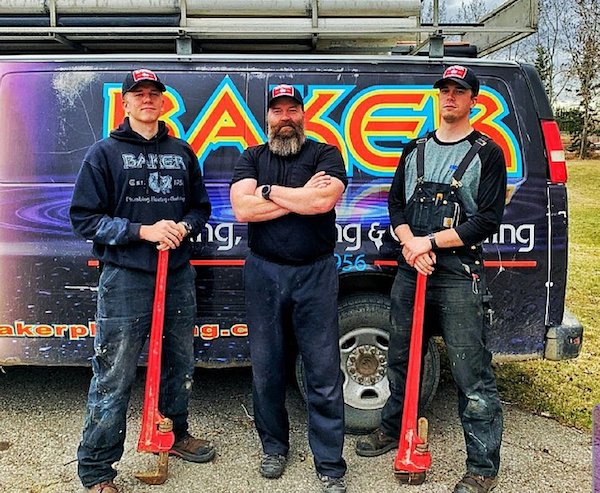
Bob Baker with his two sons, Peter (l) and Isaiah (r).
Baker has never actually been out of the trade, really. With his grandfather, dad and several uncles trained as plumbers, he started out plumbing at three or four years old. Riding in the truck with his dad, making putty snakes, hauling garbage to playing gopher boy. That role continued until he finished high school and was accepted to university.
Baker spent a few years there, then switched to obtain a computer science degree. He got married and needed to make some money, took a job as a maintenance man for the several apartment buildings while continuing his schooling. “I actually realized that that all those years working with my Dad, I actually learned a lot and that I loved doing plumbing. I eventually quit computer science, went to trade school, got my ticket in 1997, and have been plumbing ever since.”
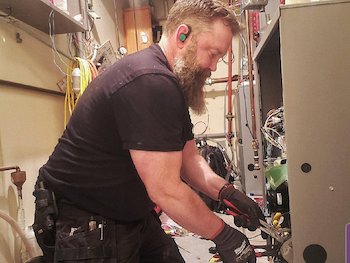 Baker owes a lot of his success, in life and in his career, to his father. He spent a lot of time working with him, appreciating what he was teaching him as both a man and a plumber. “Since he’s been gone, in almost every situation I find myself in, I ask myself, how would dad handle this? The end goal really is to leave the same impression on my own children.”
Baker owes a lot of his success, in life and in his career, to his father. He spent a lot of time working with him, appreciating what he was teaching him as both a man and a plumber. “Since he’s been gone, in almost every situation I find myself in, I ask myself, how would dad handle this? The end goal really is to leave the same impression on my own children.”
Sadly, Baker lost his Dad to brain cancer in 2006, which was swift and brutal. “Prior to that experience I never really thought about legacy or traditions or even family as in generational stories, so in the midst of dealing with the emotions of loss, pride, sadness and gratitude, I felt the urge to create something meaningful to me, my business and hopefully to my kids,” said Baker.

The Baker Family Crest
Hence, the Baker crest of arms was initiated. The Bakers have a lot of English and Scottish blood and have some prints of family crests dated back to those eras. “I stole some of those ideas and created a few of my own and the response has been exactly what I’d hope for. As for symbols it goes like this: Fire for Heating; Water drop for Plumbing, The Snake head for Drain cleaning; the Winged Foot, because we’re fast; The Skull, because we’re Bakers that are Plumbers till death; and the inscription is: If We Can’t Do It, It Can’t Be Done in Latin. Of course, we have Baker and 1956, which is our beginning.”
For the Love of the Job
For Baker, that’s an easy one. He loves the people he’s met and worked with, and he has created some lifelong friendships with some fantastic people all because they plugged their toilet or their pilot light went out.
“If you’re able to walk into a stressful situation and be calm and reassuring all while actually delivering on the solution, most people consider that heroic. It’s one of the absolute coolest feelings in the world.”
 Being an effective problem solver, says Baker, is an addiction, and plumbing and heating provide almost endless opportunities to get that fix. “Over the years I’ve tried really hard to learn and know a person’s name and then use it every time we met—it’s a difference maker. All those piled together have made the plumbing trade for me, more than I had hoped for some 30 years ago.”
Being an effective problem solver, says Baker, is an addiction, and plumbing and heating provide almost endless opportunities to get that fix. “Over the years I’ve tried really hard to learn and know a person’s name and then use it every time we met—it’s a difference maker. All those piled together have made the plumbing trade for me, more than I had hoped for some 30 years ago.”
Yet, according to Baker, the biggest issue facing the trades is the oldest issue. “Trades in general are thought of as second-tier jobs. Yes, I mean jobs. Nobody outside of the trade thinks of it as a career.”
Just last year Baker went to the local high school to talk to the principal about contributing to trade education. “He took me to the shop class and proudly pointed to the toilet and sink they had set up and said, ‘We got the plumbing side handled.’ Great guy and really good at his job, and I’ve even worked in his home, but plumbing is NOT a toilet and sink.”
The technology that is being developed for plumbing and heating systems will require some of the brightest and motivated minds, says Baker. “The message from us all in trade should be we need you. We need to do a better job at promoting ourselves and not in a selfish way but by being fine, upstanding citizens involved in current affairs, coaching little league teams, being out and about in our communities. As with anything else, the message starts and ends with each of us. The question is what message do we send both in and out of the work vans?”
Social Media—A Game Changer
“Being self-employed with your mentors being your dad and granddad makes for a pretty small circle. While clients and contractors are amazing and great to work with, no one really gets plumbing and its problems like plumbers,” says Baker.
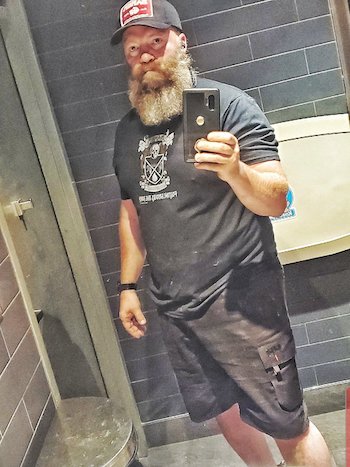 The social channels have brought dozens of plumbers into Baker’s life in the most positive of ways. Other than the salacious DOPE-GATE scandal, Baker can’t think of a single negative interaction online, unless you count the private no-names that try to ignite fires where ever they go.
The social channels have brought dozens of plumbers into Baker’s life in the most positive of ways. Other than the salacious DOPE-GATE scandal, Baker can’t think of a single negative interaction online, unless you count the private no-names that try to ignite fires where ever they go.
The summer of 2019, Baker spend a fantastic week in Chicago and was given the first-class treatment and tour by several of the plumbers from the area. While others in his group were hitting tourist traps, Baker was in the heart of Chicago until 2 a.m. experiencing some of the most amazing things.
Baker also went to WWETT in March of 2020 and spent three “unbelievable days visiting with some of coolest plumbers and people I’ve ever met, and all because I post my work on social media. It’s mind blowing,” says Baker
Fitness First
Every tradesperson experiences aches and pain sooner or later, says Baker. Some of those can lead to debilitating injuries if not properly looked after. Having experienced all of them—shoulders, wrists, knees, back, etc.—one in particular in 2015 put Baker out of commission for several weeks. “It was a wake-up call that unless I started really keeping myself healthy, my time in the trade was ending soon. With a family to feed and being self-employed, I needed no further motivation.”

A new chapter — beekeeping
It started out simple with a few back exercises but exercise has grown into something Baker really enjoys. With the onset of COVID, I got serious about the home gym and the Baker Barn was born. “It’s been a life saver, both physically and mentally, to have a place where I can burn some calories and relieve some stress. I generally try and spend 90 minutes per day in the barn, and at 50 years old, I honestly have never felt better. If you’re not working out, then all of the fancy tools in the world won’t work by themselves,” says Baker.
To the Future
According to Baker, for the past 28 years or so there really wasn’t much of a work/leisure balance. Raising five kids was truly a 24-hour endeavor, but Baker has been humbled as his kids have turned into men and women to start their own lives. Both Baker’s boys have chosen the plumbing trade path, and they can now start to take over some of the duties. “My new passion has fallen to bees. This past year was my second full year as a beekeeper and so far it’s been a lot of fun learning something totally new. The hope is to turn bees into the next Baker Empire over the next five years, but I’m just enjoying the nuisances of the new craft,” says Baker.
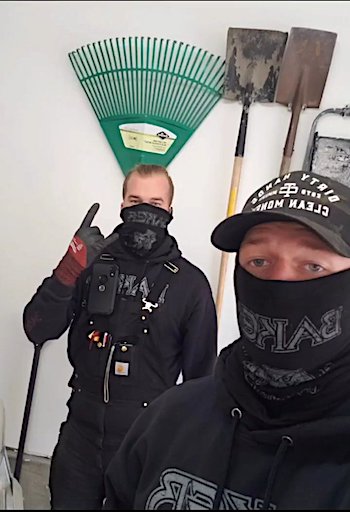 2020 was a hell of a year. COVID wreaked havoc on a lot of what Baker does. Being mostly hospitality focused proved to be challenging, but Baker has some tremendous relationships with many of his clients, and as he has supported them, they have supported him back. It’s also given the company a chance to zero in on its 3,000 residential clients that use Baker’s services once or twice a year. “With the boys taking a more active role, we’ve been able to provide faster and more efficient service to those sequestered at home. Of course, it’s also provided ample opportunity to reflect on the blessings of being considered essential, and helping those that need some assistance as things appear to get a wee bit darker.”
2020 was a hell of a year. COVID wreaked havoc on a lot of what Baker does. Being mostly hospitality focused proved to be challenging, but Baker has some tremendous relationships with many of his clients, and as he has supported them, they have supported him back. It’s also given the company a chance to zero in on its 3,000 residential clients that use Baker’s services once or twice a year. “With the boys taking a more active role, we’ve been able to provide faster and more efficient service to those sequestered at home. Of course, it’s also provided ample opportunity to reflect on the blessings of being considered essential, and helping those that need some assistance as things appear to get a wee bit darker.”
 But as the calendar flips to 2021, Baker expects a banner year. He’s secured some great new contracts, and with the help of his boys, the ability to serve even more continues to grow. “We’re grateful that everyone is healthy and progressing through the challenges that our little moment in history is giving us the opportunity to participate in. We’re optimistic about the future and truly believe that there is no better time to be in the trades. We wish everyone, everywhere all the best in 2021. I’m especially delighted to start the year off by answering these questions and contributing to the foundational work Mechanical Hub provides at no charge. I do mean it: I think you and the team are doing great and important things,” says Baker.
But as the calendar flips to 2021, Baker expects a banner year. He’s secured some great new contracts, and with the help of his boys, the ability to serve even more continues to grow. “We’re grateful that everyone is healthy and progressing through the challenges that our little moment in history is giving us the opportunity to participate in. We’re optimistic about the future and truly believe that there is no better time to be in the trades. We wish everyone, everywhere all the best in 2021. I’m especially delighted to start the year off by answering these questions and contributing to the foundational work Mechanical Hub provides at no charge. I do mean it: I think you and the team are doing great and important things,” says Baker.
Finally, when asked the last time he said, “today is a great day,” Baker can honestly say that he says that almost daily. “Maybe not in the moment of things going sideways, but the days of discouragement and disappointment are few and far between. I am a blessed man, mostly because I’ve worked hard to be so.”

Mike Corsillo, a Ohio new-construction plumbing contractor, keys his success on rigorous planning, organization, and offering builders and consumers the “latest and greatest” for their homes. MODA Supply Boxes have proven a perfect fit with those business values. Third-generation plumber Mike Corsillo has a background familiar to many professional plumbers: tagging along with his dad Read more
Mike Corsillo, a Ohio new-construction plumbing contractor, keys his success on rigorous planning, organization, and offering builders and consumers the “latest and greatest” for their homes. MODA Supply Boxes have proven a perfect fit with those business values.
Third-generation plumber Mike Corsillo has a background familiar to many professional plumbers: tagging along with his dad to jobsites as a kid, thinking what fun it was to be at work with him. These good memories cemented his career choice – joining his father and brother at Corsillo Plumbing & Sewer Cleaning. In 1998, he launched the New Construction Division (NCD) of the family business.
However, after many years as one company, Mike set out on his own in 2004. He established NCD Corsillo Plumbing in suburban Cleveland. The name, of course, pays homage to his family’s history and his own future in the plumbing business. In 2020, Corsillo’s company will install plumbing in well over 200 new homes — despite the pandemic — while also handling about 30 to 40 remodels. With 22 employees and 14 trucks, Corsillo’s trading area extends roughly 80 miles from the headquarters office in Chardon.

In the following interview with Corsillo, we explore what it takes for a plumber to successfully meet the needs of home-builder clients in the highly competitive new-construction market.
Question: Why new construction versus other types of plumbing work?
Mike Corsillo (MC):I really like the opportunity to engineer the jobs ourselves. Working in residential construction for 14 different builders, we do not receive a plumbing print. The builder will show us where the plumbing fixtures go, but how we get there — the size and layout of the piping — is done by us in the field. That part of the work always intrigued me, figuring stuff out.
Q: What are the keys to success in your type of plumbing work?
MC: Planning, organizing and scheduling. If you need to get to a particular destination, you don’t just get into your car and start driving. Likewise, before you go to pipe a home, you must have a plan. We are well-organized, making sure our crews have the materials and equipment they need when they need them, and that they are scheduled accordingly.
By “scheduling,” I don’t mean we meet every deadline; rather, we know how long it will take for us to complete a certain type of job. We forecast to our builders when we will finish. If a job is supposed to start on Monday, and I cannot get there, I can tell him our people will be there on Wednesday, and they know what we say is true.
I know my parameters, so I can be flexible in moving our schedule around.
Q: What slows you down on a job?
MC: We work with lots of variables: weather, other trades late to the job, delayed product orders, etc. We try to stay ahead of all that. For example, we schedule out two months, and order all our materials that far in advance.
We have also gone to iPads in the field so my guys have all their blueprints and other key documents on pads. Anything we get on paper, I digitize to consolidate information in one place — cabinet layouts, appliances, locations of the gas line and sanitary lines, etc. I mark up those digital documents, so everyone sees the same thing at the same time. This enables us to be much more consistent in our work. We always try to stay ahead, stay innovative, in an effort to save time and money, while improving our organization.
We made the digital leap five years ago, and it has made a big difference in our productivity and accuracy. The builders we work with, both national and local, share many of the same values about planning and organization. Instead of taking on builders at random, I try to match our organization with builders who believe in the same values we do, so they will actually listen to what I have to offer to help their companies.
At the end of the day, our company is just an extension of that home builder. His success is my success.
Q: What was your reaction to Oatey’s MODA Supply Box System when it was first introduced to you by Oatey rep Matt Decaprio of Preferred Sales?
MC: Initially I was a bit skeptical, but then Matt shared a case study on how the product delivered labor savings for the contractor on a big Nashville hotel. I read that story and there were a lot of similarities in how we calculate costs. So, I thought, “Maybe it would be a good fit for us, dollar-wise.”
As I do with any case study I read, I plugged in my own numbers and at the end of the day, I saw that the product saves time. But there were other considerations as well.
All those pieces and parts on a job can get lost or broken. The MODA Supply Box is a single unit that eliminates components and is a one-time installation, reducing the likelihood that something will get lost on the job site. It makes it very easy. We always looking for ways to streamline our materials, and this product aligned with that goal.
Q: How have your crews worked traditionally with this type of application?
MC: We used a bracket system, consisting of a metal bracket and a plastic 90-degree elbow that would receive our PEX into the bracket. At the rough-in stage, we would stub hot- and cold-water lines out of the wall in PEX, and then cap each line. Then we would test the line. During the finish stage, we would cut off the cap and then install a flange, a stop and a supply line to the sink.
The MODA Supply Box eliminates all those pieces except for the supply line. As a result, during the rough-in stage, we are doing not only the rough-in, but also part of the finish. It is all condensed into the single supply box, and there is no wasted material, which used to be the case when I had to cut off the cap.
Meanwhile, all those other components are no longer needed. All I need is the supply line that connects the faucet to the valve inside the box, which also contains a flange.
Q: Have you found other benefits with the MODA Supply Box?
MC: I’m a bigger guy, and it used to be a lot of “fun” squeezing myself inside some of these cabinets and vanities. With MODA eliminating cutting and capping lines, a mechanic simply hooks the supply line to the box. The installation is quicker and easier, we save money, and we’re not beating up our guys, either. Any time I can make the job easier by reducing the wear-and-tear, it boosts productivity.
MODA also finishes much more nicely for the builder and the homeowner by providing a cleaner, more consistent look on a project.
Q: Are there any other features that you like, especially in comparison with the old methods?
MC: I was pleasantly surprised and very impressed with the heavy-duty construction of the box itself, as well as how easily the valve can be replaced if you do have a bad valve. It is a high-quality product, and I am impressed with it just as I am with all Oatey products.
Q: What kind of savings are you achieving in time and dollars?
MC: We save approximately 15 to 20 minutes on each unit, while we pay only $5 more for the MODA Box than what we paid for all those now-unnecessary components combined. So, we are seeing a savings of approximately $20 per supply box, including both the rough-in and the finish.
Each home we do uses eight to 24 boxes — the latter figure for some of the larger, custom homes we currently do. Eight is the average. We buy in bulk, again to save money, and they come in a crate of 12, and our guys are bringing back three to four boxes from each crate.
That might not seem a huge amount of money, $20 per box, but let me tell you it certainly is. In today’s market, prices area always rising, but it’s not like I can run to the builder for a concession to cover all those increases. As a result, any savings we can achieve is a total bonus, helping us to offset the constant fluctuation in commodity prices. Eight MODA boxes per house times $20 per box equals a savings of $160 per home. In a neighborhood of 200 homes, that adds up to a very nice savings.
Q: The MODA Supply Box seems a pretty good fit with the way you plumb homes.
MC: To date, we have done 15 homes with the product, and we plan to continue using it. We always want to separate ourselves from the competition at least a little. And we want the customer to know they are getting the latest and greatest products in their new home. Just like cell phones: No matter what you have, the new one always seems better. We are trying to do that with plumbing products.
When we see a product that can help us promote a new home, make it different in the eyes of the buyer than the guy’s home next door, it’s a win for us and the builder.
